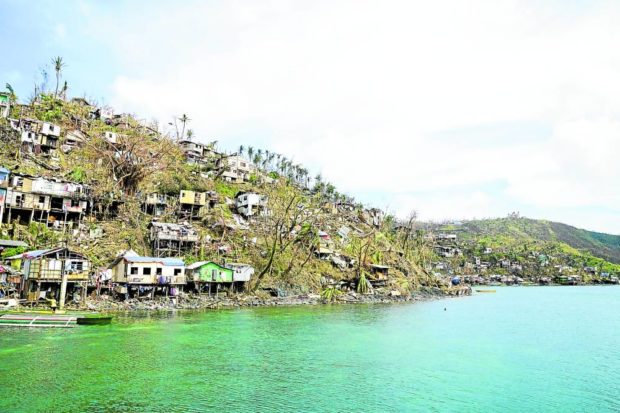US hikes Odette aid to $20 million

SCARRED The people of Dinagat Islands are left scarred by Typhoon “Odette,” which carved a wide swath of destruction in Visayas and Mindanao on Dec. 16. —MALACAÑANG PHOTO
MANILA, Philippines — The US government, through the United States Agency for International Development (USAID), has raised its humanitarian assistance to victims of Typhoon Odette (international name: Rai) to $20.2 million or over P1.01 billion.
It initially pledged $200,000 (about P10 million), then added $1 million (P50 million), before committing another $19 million (P950 million).
“With this humanitarian assistance, USAID will provide food assistance; water, sanitation and hygiene programs to help keep people healthy; shelter assistance to meet emergency needs and help affected communities start rebuilding homes; and protection for the most vulnerable,” the aid agency said in a statement.
“We stand steadfast with our longstanding friend, partner and ally in helping support communities devastated by the typhoon. This additional assistance will help deliver food and hygiene supplies, and provide life-saving support to those most in need,” US Embassy in the Philippines Chargé d’Affaires ad interim Heather Variava said in a separate statement.
According to the US Embassy, Variava also plans to visit affected communities and see ongoing US relief activities.
Article continues after this advertisement“Since 2010, USAID has provided more than P17 billion ($340 million) in disaster relief and recovery aid, and boosted the disaster risk reduction capacity of over 100 cities and municipalities in the Philippines,” the embassy said.
Article continues after this advertisementThe World Bank, which will lend the Philippines a total of $200 million or about P10 billion from its $500 million fourth disaster risk management development policy loan with a catastrophe-deferred drawdown option (CAT-DDO 4) facility, said in a Dec. 28 statement that the initial $80-million financing released on Tuesday was in support of “ongoing government efforts to strengthen disaster response and recovery policies and interventions.”
“It comes with technical assistance to support preparations of preapproved disaster rehabilitation and recovery plans to speed up access to funding from the national government for postdisaster recovery and reconstruction,” it added.
Additional resources
The World Bank noted that the contingent credit line allowed the Philippines to immediately tap financing, upon declaration of a state of calamity or national health emergency, “to manage financial impacts brought about by these shocks without undertaking disruptive budget reallocations or cutting implementation of ongoing programs.”
“The Philippine government may access additional resources from the CAT-DDO 4 in response to [Odette] in January 2022,” it said, referring to the additional $120 million to be drawn during the first week of next year, upon availability of loan cover from the 2022 national budget, which President Rodrigo Duterte was expected to sign on Dec. 30.
“In times of calamities like typhoons and floods, poor families suffer disproportionately. The World Bank stands with the country during this difficult time. We are committed to help hasten the country’s recovery and reconstruction efforts, restore social services, and strengthen the country’s defenses against future disaster risks,” said Ndiamé Diop, the Washington-based multilateral lender’s country director for Brunei, Malaysia, the Philippines and Thailand.
World Bank Philippines senior disaster risk management specialist Lesley Jeanne Cordero said the “ready to rebuild (R2R)” program being jointly implemented together with the National Disaster Risk Reduction and Management Council since March this year “could be tapped to assist the provinces, cities and municipalities affected by [typhoon] Odette as they develop their local recovery plans, implement reconstruction projects and leverage funding support.”
“This will help devastated communities build back better and pursue a green, resilient, and inclusive recovery,” Cordero said.